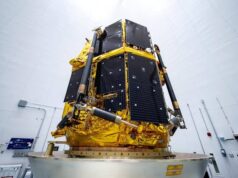Russia’s future orbital station will have seven modules with centrifuge
The service station will be a part of the infrastructure for flights to the Earth’s natural satellite

The future Russian Orbital Service Station (ROSS) will comprise seven modules and a short-arm centrifuge, according to the specifications of a research project on preparations for a flight to the Moon posted by the federal space agency Roscosmos on the government’s procurement website.
“The work on the project of specifications for an assembly module, a versatile nodal module, a laboratory module, a freely flying module, a transformable module, a core unit, an airlock module and a short-radius centrifuge,” the document says.
Russia’s future orbital outpost will be a part of the infrastructure for flights to the Earth’s natural satellite, according to the document.
As the document posted on the government’s procurement website suggests, Roscosmos will spend about 1.7 billion rubles ($23.4 million) on studying the conditions of cosmonauts’ stay on the Moon and in lunar orbits.
Russia will develop the lunar base concept by late 2025.
Technical specifications for creating a Russian lunar base should be formulated by the end of 2025, the document says.
The work will be carried out as part of the 1.7 billion-ruble tender “Applied Studies of the Issues of Manned Flights to the Moon and the Creation of Key Elements and Technologies, Including Biomedical Aspects to Provide for Cosmonauts’ Stay and Work in Lunar Orbit and on the Moon’s Surface Within the 2022-2025 Program.”
Specifically, the document stipulates completing work by November 2025 to develop specifications for the experimental design work, “Habitable Module of a Lunar Base” and “An Energy Module of a Lunar Base.” Documents will be also worked out for a lunar lander and a lunar building rover.
“The work on developing requirements for future space rocket technologies, elements and systems is designed to ensure “the reliable implementation of manned flights to the Moon, the cosmonauts’ work in lunar orbit and on the Moon’s surface, considering the solution of biomedical problems,” the document says.




